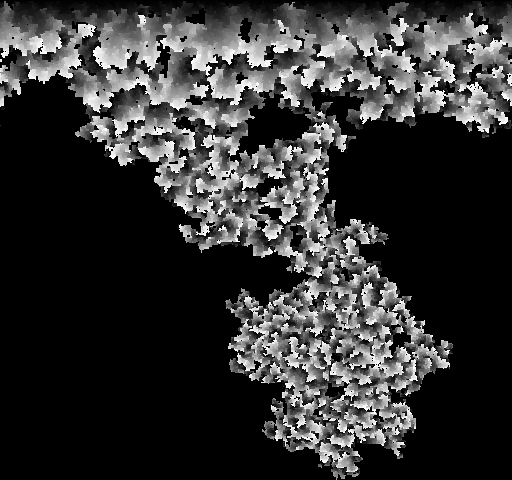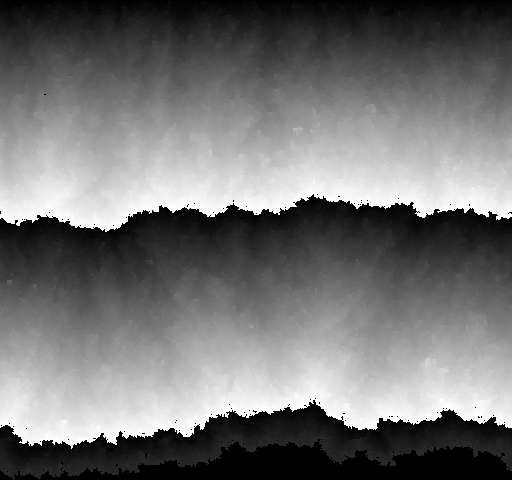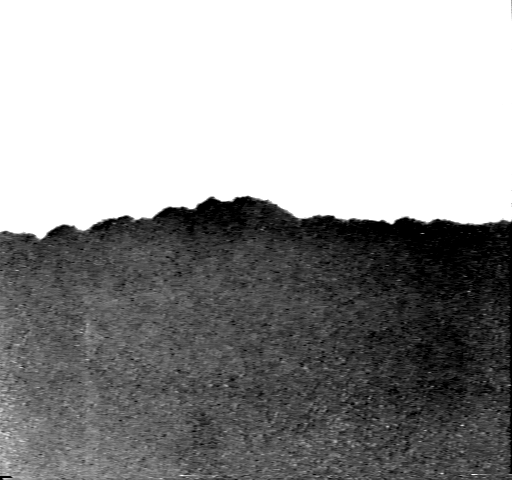
This figure is from a model with a very low driving force. The water invades from the top and heads downward. The different intensities correspond to different times in the simulation. For very low driving force, note that the interface is very irregular and tends to snake its way through the path of least resistance.

